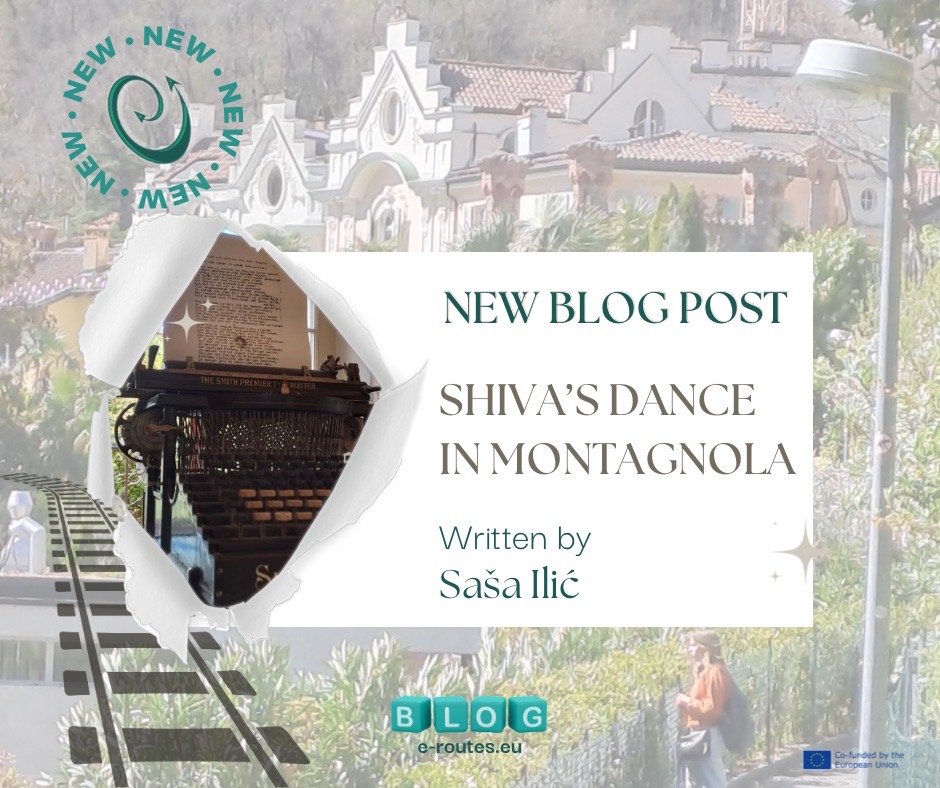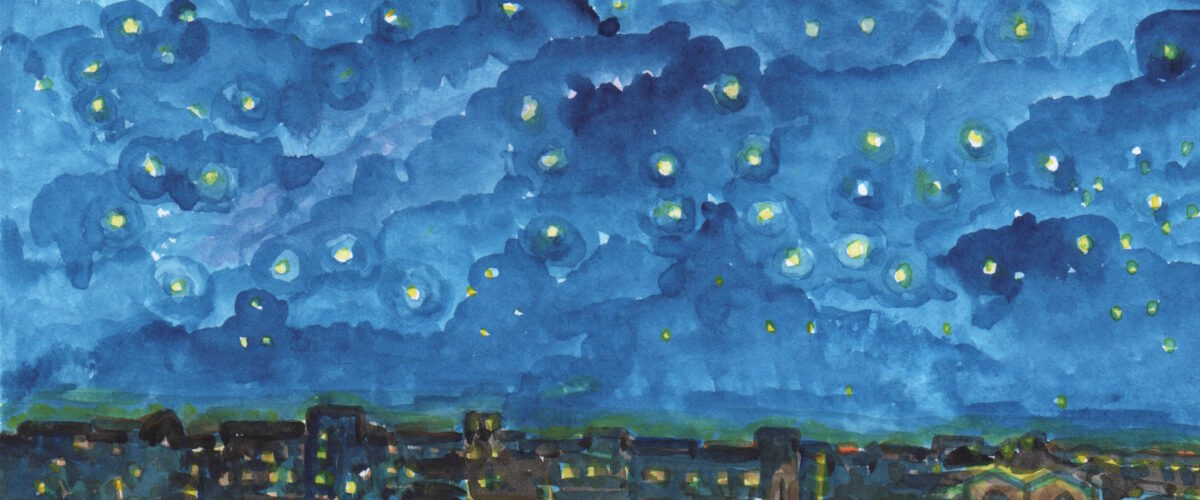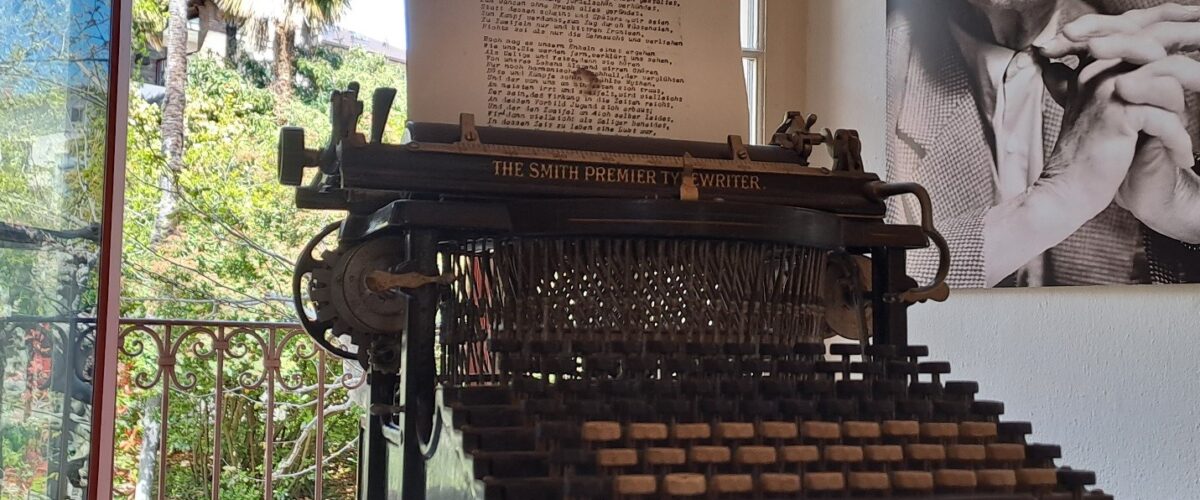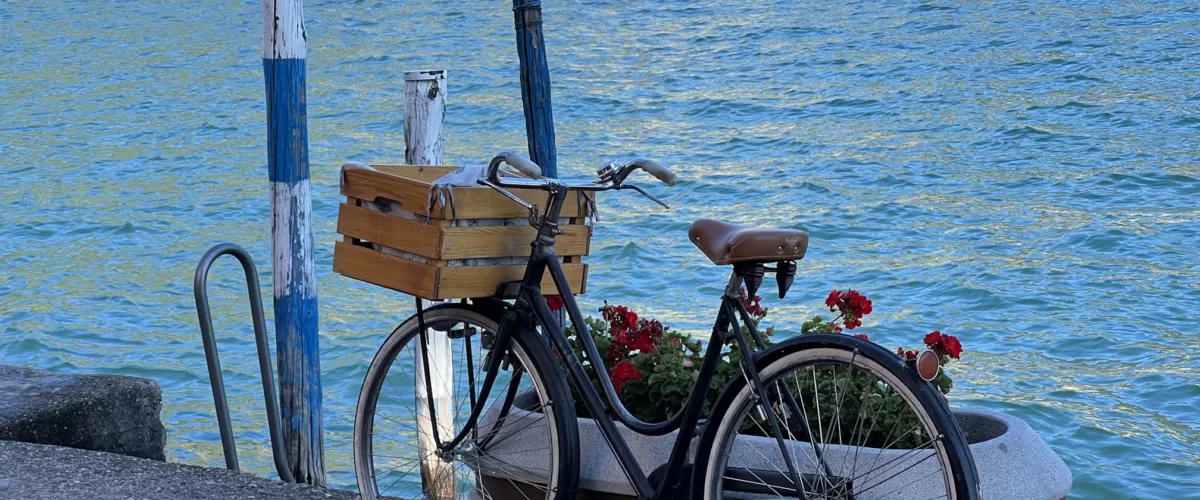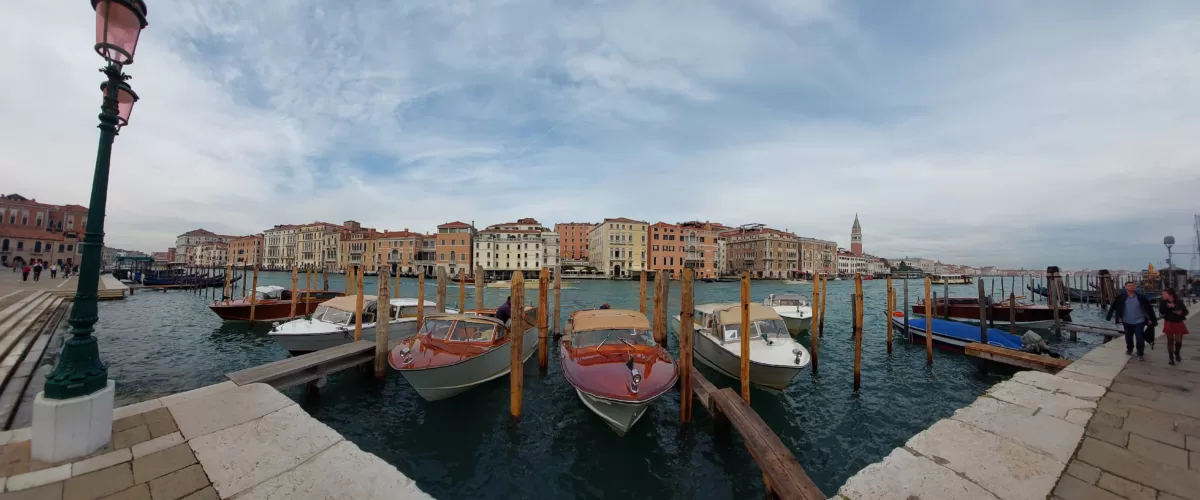E-ROUTES team proudly published our fifth project blog entry, an unusual and personal travel story by Serbian writer Saša Ilić about Montagnola, a place in the Italian speaking part of Switzerland, which, among other things, is known as Hermann Hesse residency in between the two world wars. This great travel story is available both in English (English translation by Ljiljana Nikolić) and Serbian and illustrated with superb photos by Saša Ilić. Enjoy in reading it!
“This is not my journey. It is Nadja’s. Just as the voyage to India in 1911 was not Hesse’s but Siddhartha’s. In the same way that Siddhartha’s walk with the Samanas was not his own but Budha’s. When Hermann Hesse, horrified by war and his wife’s illness arrived in Ticino in 1919, he sought the road to the hills and the village of Montagnola up there. Although, he believed the journey to be his own it was that of Siddhartha, because having made the initial few steps out of Lugano he was already treading the paths that led him to write the novel about the Brahmin’s son. Now, what a sojourn in an Italian canton in Switzerland’s south has to do with India when the morning bell rung from the church of Santa Maria degli Angeli is a constant reminder of Christ’s crucifixion conserved on its walls. It was painted by a renaissance master Bernardino Luini, about thirty years after the epidemic of plague in Europe, far from Buddhist meditations and the Brahmin religion. And yet, it was on that road that Siddhartha was written, Hesse’s meditative novel of self-awareness. Although first published in 1922 it gained full actuality only within the hippie movement, after the death of its author. Some books indeed have unpredictable fate, but far more interesting is their link with the ambient wherein they were created. In order to understand that one must come to the very place, where in between footsteps across mountain passes ideas emerged to be transformed into words and, eventually, letters which in afternoon hours rained from the keys of Hesse’s’ Smith Premier No. 4 typewriter onto the whiteness of paper in a downpour of lead.”
